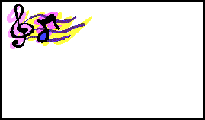U.R.Y. by Hillsong
Jun 12th, 2008 by admin
This is how you can play U.R.Y. using 3 fingers – 1 on your left hand, 2 on your right hand. And you need literally only 2 ‘chords’ on your right hand.
There are two parts in this song: the verse and the chorus. Duh.
The progression for the verse actually goes like this (if u r interested, that is. Otherwise, just follow my YouTube video illustration):
VIm –> V –> IV –> I/M –> IV –> V
If this is the first time you see an “M” in a chord notation, check out my “The M Bass” post.
You should immediately notice the bass pattern in the above progression, which goes like this:
6 –> 5 –> 4 –> 3 –> 4 –> 5
The song is in G key, so the chord progression for the verse is translated to:
Em –> D –> C –> G/B –> C –> D
Just keep it this way for the moment. I will come back to this progression again shortly. Let’s turn our attention to the chorus for the moment.
The progression for the chorus goes like this:
I –> VIm –> IV –> V
And in the G key, that means:
G –> Em –> C –> D
So these are the 2 progressions we have got.
Verse: Em –> D –> C –> G/B –> C –> D
Chorus: G –> Em –> C –> D
For those of you who are interested to know how I have turned that into 2 ‘chords’ played with 3 fingers, please read on.
The Em chord here can be an Em7 chord.
The D here is actually a D4 (or Dsus4). Refer to my “Suspension (part 1)” post for Sus4.
The C here is a C2. Refer to “Suspension (part 2)” for Sus2.
What we actually have therefore should be:
Verse: Em7 –> D –> C2 –> G/B –> C2 –> D4
Chorus: G –> Em7 –> C2 –> D4
Now, Em7 can be improvised by G/E (Refer to “The 3 Minor Chords” post). Therefore, the progressions become:
Verse: G/E –> D –> C2 –> G/B –> C2 –> D4
Chorus: G –> G/E –> C2 –> D4
That looks awfully complicated but let’s examine these 3 chords: G, C2 and D4.
G chord is made up of these 3 notes: G, B, D
C2 chord is made up of these 3 notes: C, D, G
D4 chord is made up of these 3 notes: D, G, A
Notice that they all have D note and G note in common? That’s why my right hand can play these 3 chords as 1 ‘chord’ that is made up of 2 notes: D and G (and forget the rest)
The other chord that you see I play on the video is a straight D major chord, which is made up of these 3 notes: D, F# and A. But you must have noticed that I only play the first 2 notes. Well, it’s not a big sin to do so, is it? Afterall, this is ‘Piano Cheats’ here. ![]()
That D major chord occurs at 2 places: one is in the verse, just after G/E chord. The other place is as a ‘transition’ chord, more of an enhancement to the G chord and the Em7 chord in the chorus. Refer to my “Chord Mixing” post (under “Cheat Tricks” category) for this enhancement trick.
That’s quite enough of the explanation. Here is the video:





